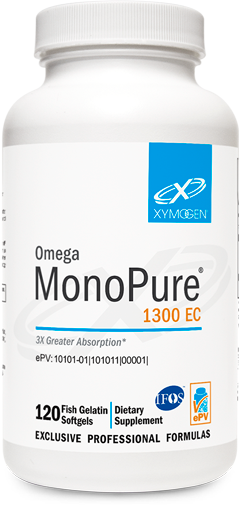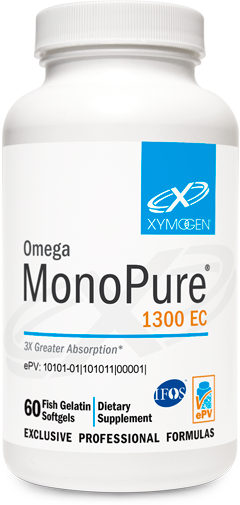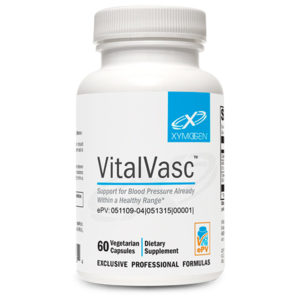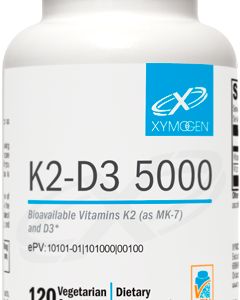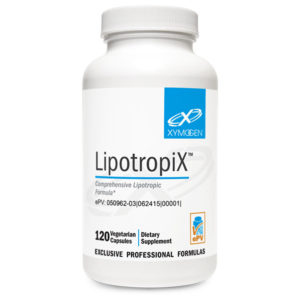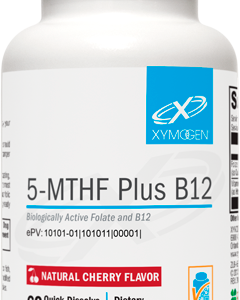Scientific Information/Data
MaxSimil® Patented Lipid Absorption Enhancement Technology (PLATform)
The MaxSimil PLATform is a novel monoglyceride delivery system that enhances absorption of lipid-based and lipid-soluble nutraceutical and food ingredients. This technology has been applied to Medical Detective’s Omega MonoPure® 1300 EC formula in order to create a unique vehicle by which to deliver EPA and DHA. Due to the fact that monoglyceride oils are intrinsically emulsifiers and are, by nature, in a readily absorbable form (Figure 1), they can bypass the body’s normal fat digestion process. These qualities make Omega MonoPure an excellent method for delivering omega-3 fatty acids, especially to individuals with digestive, pancreatic, or gall bladder challenges. Studies show that MaxSimil fish oils (FO) have three times (300%) greater absorption of EPA and DHA compared to other leading fish oils.*[1-3]
Unique structure: One fatty acid attached to a glycerol backbone provides two polar ends that attract water and a non-polar tail end (R1) that attracts fat, thus enabling self-emulsification of the Omega MonoPure® 1300 EC formula.
Reprinted with permission from Ingenutra, Inc.
Quality
Omega MonoPure® 1300 EC formulas are made using proprietary MaxSimil® compositions containing monoglyceride FO with no additional ingredients, carriers, or excipients. Each fish-gelatin softgel is enteric-coated, and every batch of fish oil is IFOS five-star certified to ensure the world’s highest standards for purity, potency, and freshness. The fish oil is non-GMO, certified sustainable from Scandinavia, and antibiotic-free. Additionally, it is eco-friendly because the greater absorption of EPA and DHA ultimately means that fewer grams of fish oil need to be harvested for the same benefit.*
In Vitro and In Vivo Animal Studies
The ability of MaxSimil-enhanced EPA and DHA to positively influence growth inhibition and apoptosis in colorectal, breast, lung, and prostate diseased cell lines was first demonstrated in a series of in vitro studies.[4-6] Researchers subsequently set out to demonstrate efficacy in animal models after oral administration. In three separate animal models, MaxSimil EPA and DHA forms showed superior activity on diseased cell-line growth inhibition and cytokine production when compared to control, corn oil, krill oil, or the parent forms ethyl ester (EE) EPA and ethyl ester (EE) DHA.[4,7,8] These in vivo animal studies proved that orally supplemented MaxSimil EPA and DHA were well-absorbed and bioactive. Researchers postulated that the observed superior effects of MaxSimil EPA and DHA forms were the result of enhanced absorption, and they set out to prove this hypothesis.*
Preclinical Bioavailability Studies
The in vivo pharmacokinetic studies in rodents involved a comparison between MaxSimil DHA FO and its parent EE DHA FO and an analysis of blood concentrations of DHA over time. The doses used were equivalent to human doses of 3 g/day and 30 g/day; the latter was included primarily to investigate toxicity at high doses. Researchers found that MaxSimil DHA FO had a three times (3x) higher peak concentration (6% versus 2%, Figure 2), a 3x higher saturation potential at the high dose (10% versus 3%), and a 3x higher absorption rate (at a 3 g/day equivalent human dose) than its parent DHA FO. No toxicity was observed at either dose level.[1,2] This research demonstrated superior bioavailability and presumably better exposure of cells to DHA.*
INSERT PICTURE
Figure 2. Preclinical Bioavailability Study in Rodents Demonstrates Superior Peak Concentration, Saturation, and Absorption of MaxSimil DHA FO Versus Its Parent DHA FO
Data were derived from Ingenutra, Inc.[1,2]
Clinical Bioavailability Study
A phase 1, double-blind, randomized, crossover, pharmacokinetic study was performed in 20 healthy adults aged between 19 and 71 years who were administered 6 g (containing 1800 mg EPA and 1200 mg DHA) per day of EE FO or MaxSimil FO.[3] Parameters studied were plasma EPA and DHA concentration (as percent of total fatty acids), Cmax, and AUC. Compared to EE EPA+DHA, the results indicated that at peak concentration, MaxSimil EPA and DHA forms were 3x higher, they reached maximum concentration faster, and maintained their plasma levels longer (Figure 3). The finding in the animal study was validated: the MaxSimil FO instantaneous absorption was 3x greater than the EE form. Likewise, the AUC over 24 hours was also more than 3x higher (P<.0001) for MaxSimil EPA and DHA (MaxSimil FO).*
Not only did this study confirm the bioavailability findings in the animal study, but it also demonstrated that after 24 hours, the MaxSimil FO maintained 2-3x higher blood levels of EPA and DHA than the EE FO. This means that, given a daily dose, circulating EPA and DHA levels can be expected to ramp up over time and remain high with steadily increasing exposure of cells to EPA, DHA, and their metabolites. Based on the results of the bioavailability studies, an individual would get more EPA and DHA from MaxSimil FO than from EE FO gram for gram. Furthermore, as shown in the animal studies, one could anticipate enhanced effects. It is noteworthy that all 20 adults who completed the study saw their omega-3 absorption enhanced when taking the MaxSimil enhanced FO.*
Expanding Research
In vitro and animal studies have demonstrated the positive effects of MaxSimil FO on airway immune response (e.g., IgE, leukocytes); the expression of COX-2, NF-kB, cytokines (e.g., IL-6, IL-8), MUC5AC, and mucin; and Ca(2+) hypersensitivity in lung tissues.[8-11] In other research, rats subjected to eight weeks of a high-fat, high-carbohydrate diet were either not supplemented or provided 3 g/day of MaxSimil DHA. Compared to the data from the non-supplemented group, the data from the MaxSimil DHA supplemented group clearly showed a positive impact on cardiovascular health parameters. Measures included blood pressure, heart rate, serum lipid levels, cytokine production, aortic wall thickness, and a DHA:AA ratio in aortic tissue, which correlated with the production of resolvin D2 and D3 metabolites.*[12]
A Note About Resolvins and Other EPA and DHA Metabolites
Specialized proresolving lipid mediators, such as resolvins, protectins, and maresins, are EPA and DHA metabolites naturally produced in vivo through enzymatic conversion of EPA and DHA. These mediators aid the body’s “clean-up” response to the arachidonic acid cascade.[13] Rather than supplying a single molecule or metabolite, which would mirror the pharmaceutical model, Omega MonoPure® 1300 EC fish oils provide all the benefits of EPA and DHA as well as the expected and desirable benefits of their metabolites.*
Arthricor®: MONOMEGA
Each softgel of Omega MonoPure® 1300 EC provides 500 mg of MaxSimil FO combined with 50 mg of Arthricor olive leaf extract. It is generally accepted that the Mediterranean diet is beneficial to cardiovascular health,[14-16] and research suggests that olive oil and its phenolic constituents are primary contributors.[17-21] Taking Arthricor olive leaf extract daily provides the polyphenolic benefits of eating five olives or
50 mL of olive oil each day. Phenolic compounds, as found in Arthricor, have been shown to have a protective effect against LDL oxidation.[19,22,23] Arthricor provides three polyphenols—hydroxytyrosol, oleuropein, and tyrosol—for maximum benefit.*
References
- Unpublished, internal data. Ingenutra.
- Fortin S, inventor; Centre de Recherche sur les Biotechnologies Marines, assignee. Compositions comprising polyunsaturated fatty acid monoglycerides or derivatives thereof and uses thereof. US patent 8,198,324. June 12, 2012.
- MaxSimil Patented Lipid Absorption Technology Clinical Study Report: MaxSimil® 3020 Omega-3. Sherbrooke (Québec), Canada: Ingenutra; 2015. [Unpublished, internal data]
- Morin C, Rousseau É, Fortin S. Anti-proliferative effects of a new docosapentaenoic acid monoacylglyceride in colorectal carcinoma cells. Prostaglandins Leukot Essent Fatty Acids. 2013 Sep;89(4):203-13. [PMID: 23932824]
- Fortin S, inventor; Centre de Recherche sur les Biotechnologies Marines, assignee. Polyunsaturated fatty acid monoglycerides, derivatives, and uses thereof. US patent 8,119,690. February 21, 2012.
- Fortin S, inventor; Centre de Recherche sur les Biotechnologies Marines, assignee. Polyunsaturated fatty acid monoglycerides, derivatives, and uses thereof. US patent 8,329,747. December 11, 2012.
- Morin C, Blier PU, Fortin S. Eicosapentaenoic acid and docosapentaenoic acid monoglycerides are more potent than docosahexaenoic acid monoglyceride to resolve inflammation in a rheumatoid arthritis model. Arthritis Res Ther. 2015 May 29;17:142. [PMID: 26022389]
- Morin C, Fortin S, Cantin AM, et al. Docosahexaenoic acid derivative prevents inflammation and hyperreactivity in lung: implication of PKC-Potentiated inhibitory protein for heterotrimeric myosin light chain phosphatase of 17 kD in asthma. Am J Respir Cell Mol Biol. 2011 Aug;45(2):366-75. [PMID: 21057106]
- Morin C, Fortin S, Cantin AM, et al. MAG-EPA resolves lung inflammation in an allergic model of asthma. Clin Exp Allergy. 2013 Sep;43(9):1071-82. [PMID: 23957343]
- Morin C, Cantin AM, Rousseau É, et al. Pro-resolving action of MAG-DHA in lung inflammatory models related to cystic fibrosis. Am J Respir Cell Mol Biol. 2015 Oct;53(4):574-83. [PMID: 25781052]
- Morin C, Fortin S, Rousseau É. New omega-3 derivatives reduce airway inflammation and prevent rho-kinase activation in an allergic model of asthma. J Aller Ther. 2012;3(S1):003. doi:10.4172/2155-6121.S1-003.
- Morin C, Rousseau E, Blier PU, et al. Effect of docosahexaenoic acid monoacylglyceride on systemic hypertension and cardiovascular dysfunction. Am J Physiol Heart Circ Physiol. 2015 Jul 1;309(1):H93-H102. [PMID: 25910811]
- Weylandt KH, Chiu CY, Gomolka B, et al. Omega-3 fatty acids and their lipid mediators: towards an understanding of resolvin and protectin formation. Prostaglandins Other Lipid Mediat. 2012 Mar;97(3-4):73-82. [PMID: 22326554]
- Guasch-Ferré M, Hu FB, Martínez-González MA, et al. Primary prevention of cardiovascular disease with a Mediterranean diet. N Engl J Med. 2013 Apr 4;368(14):1279-90. [PMID: 23432189]
- Mayor S. Mediterranean diet reduces cardiovascular events in people with heart disease, study shows. BMJ. 2016 Apr 24;353:i2348. [PMID: 27114468]
- Chiva-Blanch G, Badimon L, Estruch R. Latest evidence of the effects of the Mediterranean diet in prevention of cardiovascular disease. Curr Atheroscler Rep. 2014 Oct;16(10):446. [PMID: 25115436]
- Fitó M, Cladellas M, de la Torre R, et al. Anti-inflammatory effect of virgin olive oil in stable coronary disease patients: a randomized, crossover, controlled trial. Eur J Clin Nutr. 2008 Apr;62(4):570-74. [PMID: 17375118]
- Ruano J, López-Miranda J, de la Torre R, et al. Intake of phenol-rich virgin olive oil improves the postprandial prothrombotic profile in hypercholesterolemic patients. Am J Clin Nutr. 2007 Aug;86(2):341-46. [PMID: 17684203]
- Gimeno E, de la Torre-Carbot K, Lamuela-Raventós RM, et al. Changes in the phenolic content of low density lipoprotein after olive oil consumption in men. A randomized crossover controlled trial. Br J Nutr. 2007 Dec;98(6):1243-50. [PMID: 17617938]
- Bogani P, Galli C, Villa M, et al. Postprandial anti-inflammatory and antioxidant effects of extra virgin olive oil. Atherosclerosis. 2007 Jan;190(1):181-86. [PMID: 16488419]
- Guasch-Ferré M, Hu FB, Martínez-González MA, et al. Olive oil intake and risk of cardiovascular disease and mortality in the PREDIMED Study. BMC Med. 2014 May 13;12:78. [PMID: 24886626]
- Castañer O, Covas MI, Khymenets O, et al. Protection of LDL from oxidation by olive oil polyphenols is associated with a downregulation of CD40-ligand expression and its downstream products in vivo in humans. Am J Clin Nutr. 2012 May;95(5):1238-44. [PMID: 22440854]
- Raederstorff D. Antioxidant activity of olive polyphenols in humans: a review. Int J Vitam Nutr Res. 2009 May;79(3):152-65. [PMID: 20209466]
*These statements have not been evaluated by the Food and Drug Administration. This product is not intended to diagnose, treat, cure, or prevent any disease.


